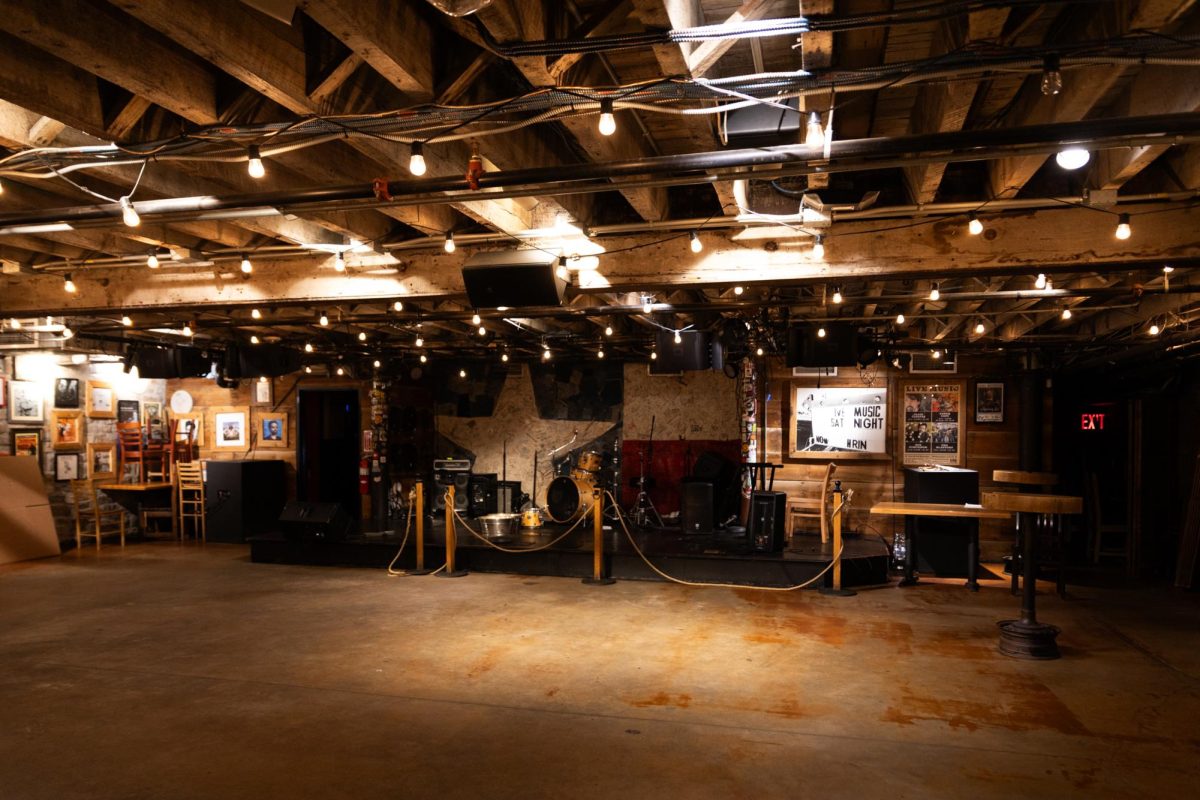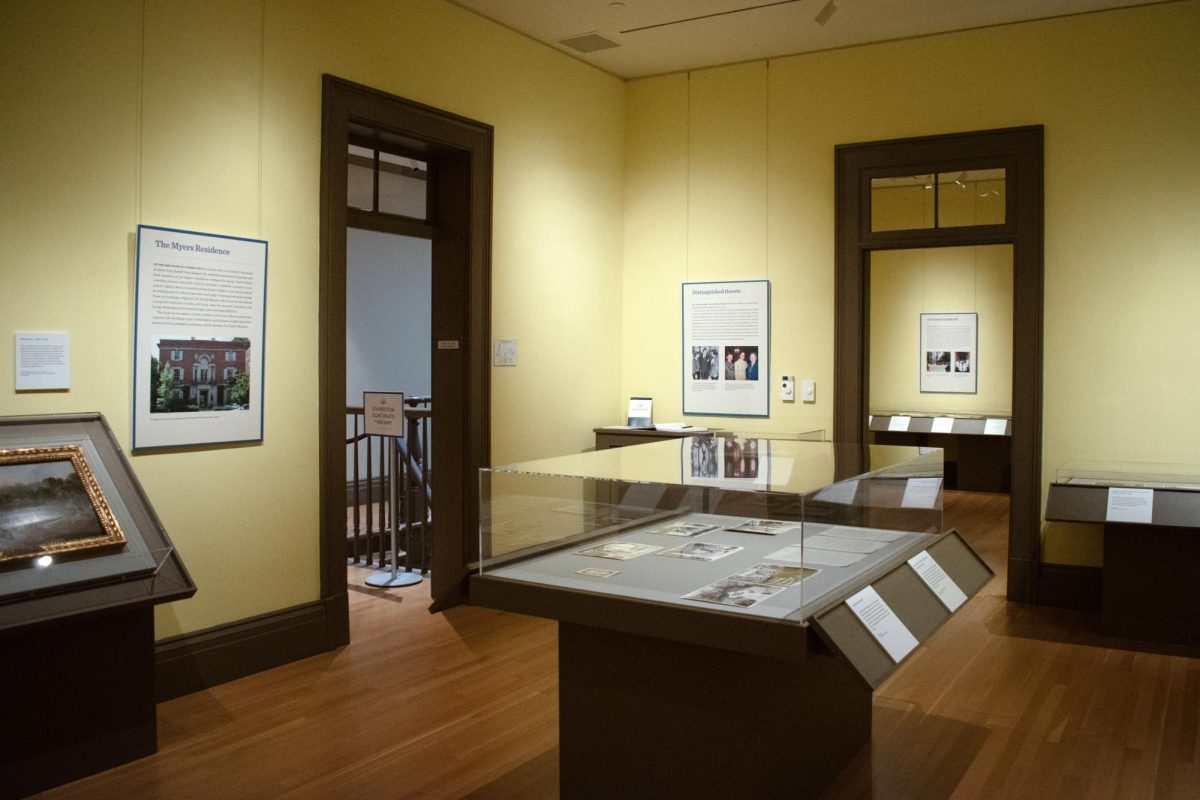From the spread of electricity to the debate over abortion access, the pages of The Hatchet have reflected key moments in American history for more than a century.
Since The Hatchet began circulating in 1904, advertisements for tobacco products, hang-out spots and political movements have created a time capsule of popular American trends and beliefs etched in the ink of the 119-year-old newspaper. Gelman Library’s Special Collections Research Center houses Hatchet publications dating back to the newspaper’s conception, allowing researchers to peel back a deep layer of campus history.
Looking through these advertisements has helped me gain a better understanding of the influences and mindsets of students generations before us, but it has also helped me appreciate the ways our society has progressed.
I decided to compile some of the most shocking, historically indicative and hilarious advertisements I could find. These were a few of the highlights:
Questionable aftershave tagline
[gwh_image id=”1183689″ credit=”Lily Speredelozzi | Assistant Photo Editor” size=”post-thumbnail” align=”center” /]
This March 1963 aftershave advertisement is shocking and questionable by today’s standards, depicting a woman draped over the shoulder of a man wearing a smug expression. The ad insinuates that the scent of Mennen’s aftershave can overtake the senses of a woman, so he can easily take advantage of her. The text even goes so far as to say “some men may use Mennen Skin Bracer because of this effect.” An advertisement like this one rightfully wouldn’t slide in 2023. But I suppose it speaks to the general lack of respect for women and the sarcastic attitude toward the idea of bodily autonomy in the mid-20th century.
[gwh_image id=”1183690″ credit=”Lily Speredelozzi | Assistant Photo Editor” size=”embedded-img” align=”right” /]
General Electric’s “experimental” electricity campaign
Sometimes, it’s hard to imagine how old the University and The Hatchet are, but this advertisement is a stark reminder. Energy company General Electric purchased an ad in a November 1924 edition of The Hatchet in an effort to convince readers that electricity is worth investment, albeit “mainly experimental” and not totally mainstream at the time.
The company pitched electricity as a marvel “particularly thrilling and important to young men and women.” The number of kilowatt-hours that residential buildings used in 1924 more than doubled by 1930, according to U.S. Census Bureau Data.
“Always comfortable” at Tonic (or Quigley’s Pharmacy)
[gwh_image id=”1183829″ credit=”Lily Speredelozzi | Assistant Photo Editor” align=”left” size=”embedded-img”][/gwh_image]
Tonic operated under the name of Quigley’s in the 1930s, named after alumnus Richard Quigley who opened the business in 1891 the year after he graduated. Advertisements for Quigley’s have always been common in Hatchet editions and appeared for decades until the 1960s, encouraging students to bring their friends to the red-bricked building on the corner of G and 21st Streets. The business first opened as a pharmacy and later blossomed into a lunch bar with new inventions like the electric soda fountain, marketed in this ad.
Tonic – the restaurant that has occupied the building since 2007 following the geography department, which was housed there up until 1974 – is still known among students as a place to dine and drink, catch up with friends and go to Monday Night Trivia. I think about this advertisement every time I walk by Tonic now and see the original “Quigley’s Pharmacy” sign.
The student’s guide to glorifying creepy behavior
[gwh_image id=”1183694″ credit=”Lily Speredelozzi | Assistant Photo Editor” align=”right” size=”embedded-img”][/gwh_image]
Tobacco seller Pall Mall had this cigarette ad in a December 1961 edition of The Hatchet endorsing “The Girl Watcher’s Guide,” a book chronicling the – for lack of a better term – hobby of ogling women in public. It’s hard to believe that unabashedly staring at women became so fixed in the mainstream, but the book’s author Donald J. Sauers even started The American Society of Girl Watchers. The group gave participating members merchandise like a lapel pin or membership card, as stated in the above ad, but the biggest perk the society gave members was perhaps a sense of validation for their behavior.
This ad, which promotes the objectification of women and characterizes “girl-watching” as an activity that can be taught in a series of lessons, offers a glimpse into the kind of attitudes many GW community members might have held at the time. Pall Mall wasn’t the only company that collaborated with “The Girl Watcher’s Guide” – Pepsi released a string of television commercials in the 1960s, like one that shows men leering at a woman walking around D.C.
Cigarettes that – allegedly – aid in digestive health
[gwh_image id=”1183830″ credit=”Lily Speredelozzi | Assistant Photo Editor” align=”left” size=”embedded-img”][/gwh_image]
This Camel advertisement in a March 1936 Hatchet edition has a large, eye-catching headline making the bold claim that their cigarettes aid “in assuring natural digestive action,” hinging the entire promotion campaign on the idea that their cigarettes are healthier than that of their competitors. The ad depicts numerous scenes with scenarios that can hinder digestion, like a tennis player whose athletic exhaustion leads to digestive issues, and counters that Camels are the secret aid to such symptoms.
Tobacco advertisements made regular appearances in Hatchet publications of the 20th century, and the 1930s saw quite the spike, with papers like a March 1936 edition featuring six separate tobacco advertisements. Many of these promotions made medically misleading assertions, like that Lucky Strike cigarettes are less acidic and prevent throat irritation and coughs from smoking, an easily disputable claim with our modern knowledge of tobacco’s effects.
The abortion debate, as advertised pre-Roe
[gwh_image id=”1183696″ credit=”Lily Speredelozzi | Assistant Photo Editor” align=”right” size=”embedded-img”][/gwh_image]
Reflective of the era’s political climate, these two advertisements from either side of the aisle lined the pages of a 1971 Hatchet edition, two years before the Supreme Court voted to protect a person’s right to abortion in the landmark case Roe v. Wade.
The image to the right promoted “ethical abortion referral” and pointed to New York as a state where anyone could get an abortion up to 24 weeks after conception. In 1971, abortion was only legal if the procedure was necessary to protect the life or health of the person in D.C.
[gwh_image id=”1183693″ credit=”Lily Speredelozzi | Assistant Photo Editor” align=”left” size=”embedded-img”][/gwh_image]
The second ad encouraged readers who were considering abortion to call their hotline called “Birthright” to consider options aside from abortion.
“It will find you the help and assistance needed to cope with your problem without resorting to an abortion,” the ad read.
A week after the Supreme Court’s historic vote, The Hatchet published an article about an event where a member of the Women’s National Abortion Action Coalition called the decision a “victory” but said policies like D.C.’s 24-hour waiting period before the procedure were “stringent.” The article did not mention any other student reactions to the decision and did not appear until the third page – the front page highlighted news of former President Lyndon B. Johnson’s death and former President Richard Nixon’s decision to halt American involvement in the Vietnam War.







